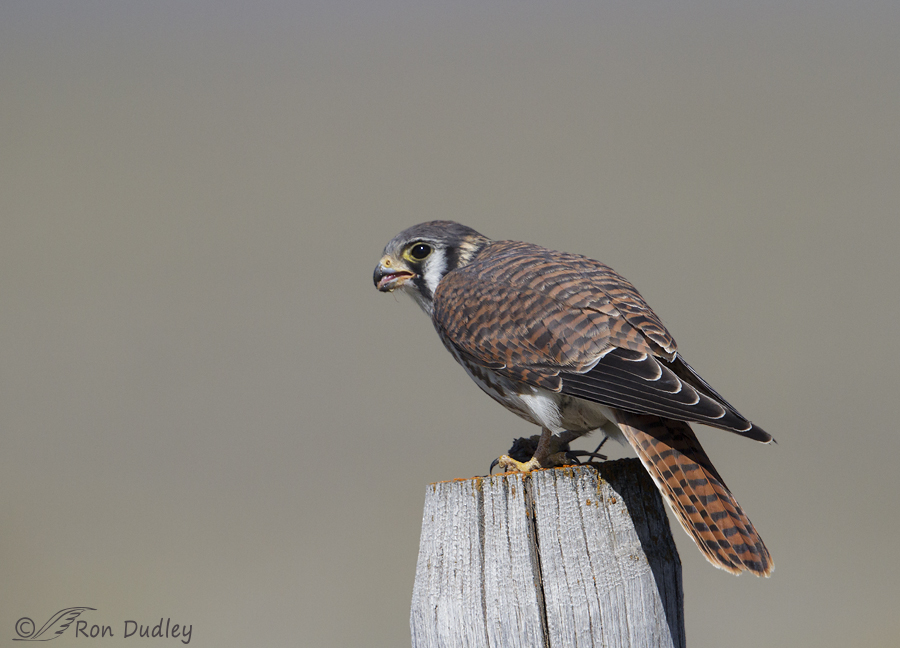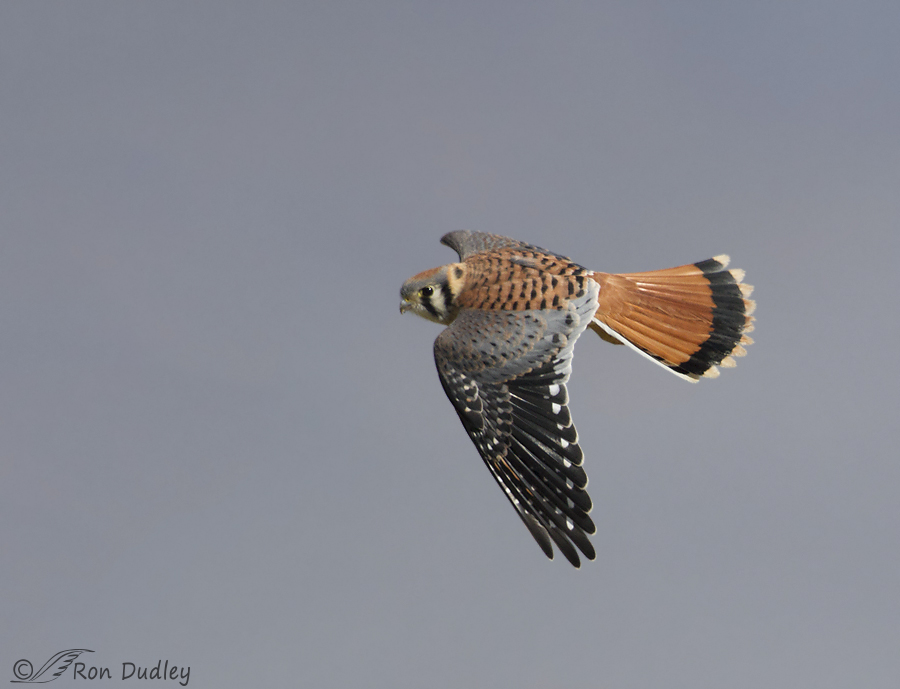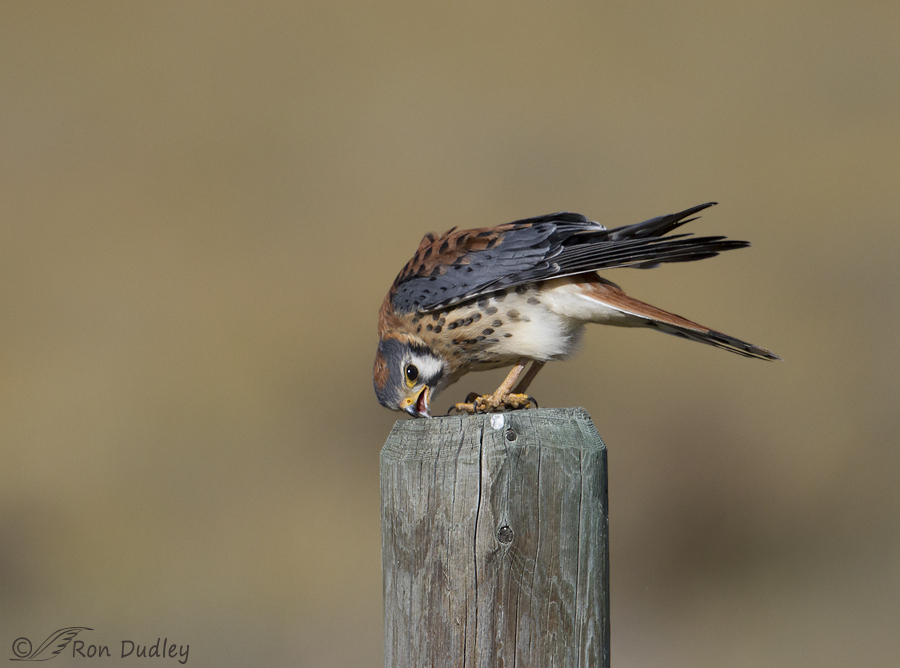American Kestrels have long been North America’s most abundant bird of prey but over recent decades their numbers have declined precipitously. The Peregrine Fund’s American Kestrel Partnership estimates that their numbers have plummeted by 88% in the New England/Mid-Atlantic states and 47% overall across North America since 1966. For that reason I pay particular notice to kestrel numbers when I return to the same area year after year and because I spend so much time in southwest Montana that region is near the top of my “kestrel watching” areas. This past summer I spent about 14 days in that part of Big Sky Country spread out over three different camping trips (May, July and September) and as always I was especially cognizant of the kestrels I encountered.
My observations were of course unscientific, anecdotal and spotty. I have no actual numbers to report but overall I was slightly encouraged. I’ve been making multiple trips to the area for 6 years now and there have been times I’ve been alarmed by the scarcity of kestrels but my most recent visit early last month produced noticeably more kestrel sightings than usual. I suspect that’s partly due to the timing of the trip near the end of the kestrel breeding season since I did see many apparent juveniles (based largely on behavior).
Following are three American Kestrel images taken last month at Red Rock Lakes National Wildlife Refuge and the Centennial Valley.

1/3200, f/6.3, ISO 500, Canon 7D, Canon EF500mm f/4L IS II USM +1.4 tc, not baited, set up or called in
This female let me approach closely (for a kestrel at least) because she had prey but as you can see she was quite wary of me and my pickup. She never did relax to the point that she fed comfortably and soon flew off with her meal.

1/4000, f/6.3, ISO 640, Canon 7D, Canon EF500mm f/4L IS II USM +1.4 tc, canvas added for composition, not baited, set up or called in
This beautiful male gave me a nice flight pose in good light but he was much too far away for quality images. I find flight shots of kestrels to be particularly challenging.

1/4000, f/6.3, ISO 500, Canon 7D, Canon EF500mm f/4L IS II USM +1.4 tc, not baited, set up or called in
This male had just finished a delicious meal of grasshopper and was cleaning his beak of leftovers.
These three birds were as close as I came to photographic success with kestrels on this last trip, partly because the Centennial Valley is truly a wild place and the kestrels are appropriately wild themselves so they rarely allow a close approach. But I saw a bunch of them over 6 days – many individuals and some that were apparently still in family groups after the nesting season.
And I couldn’t be happier about that.
Ron


I just love the second one. I have a personal motto of “Seek joy, y’all” and that one really sings to me as a pictorial representation of that.
How delightful that there were more Kestrels this year. They are such interesting and beautiful birds. And I’m always happy when you do a post on Kestrels. 🙂
I don’t care what you think, I think these are fantastic shots, even the flight shot. As always, I think you’re hyper critical of your work. You are so gifted. Thanks for sharing your talent!
Charlotte
I hope the slight increase in sightings of these beautiful, cute little killers isn’t just a fluke…afraid to get too excited, though any sighting is cause for hope…
” beautiful, cute little killers”
You nailed that description, Patty.
Wonderful, encouraging news. And shots. Fingers and toes crossed that their numbers continue to rise.
Some others are also reporting modestly good, though local, kestrel news like this, Elephant’s Child. I hope it’s a trend…
Ron, I have participated in the American Kestrel Nest Box Project with HawkWatch Intl for the last couple years (this year partnered with The Peregrine Fund) and I definitely noticed an increase this year, also (still probably anecdotal but we can hope). I love the pictures and always appreciate the “documentary” that goes along with it.
Doug, I’m a big fan of HWI and two of my friends, Mike Shaw and Tana Peery Hunter are heavily involved in their efforts with kestrels. I suspect you may know them. I’m delighted to hear that you’ve noticed an increase in kestrel numbers over the last couple of years. Thanks for you efforts and for the kestrel report.
these are such beautiful birdies … lovely, lovely captures as always!!!
I’m glad you enjoyed them Lois. Thank you.
I’m happy to hear your observations. And I’m very taken with the third photo of the series. So vivid!
Thanks, Alison. That third shot is my favorite of the three.
Wonderful shots Ron. I took an image of a sitting male on the roof of our neighbors cottage that I just put into some Natural History notes that I write for our local retirement community. They are an interesting species to watch. I don’t know whether the scarcity here is the Gray Ghost and its mate in the summer or Red-tails in the winter, but the only time I tend to see Kestrels is either early fall or early spring. It is a delight either way!!
“It is a delight either way!!”
I couldn’t agree more, Dick. Our kestrels here in Utah are struggling too but each one I see gives me a sprig of optimism. Hope I’m not grasping at straws…